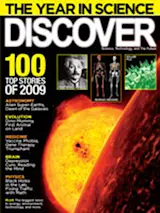Roughly 2.4 billion years ago, a rapid buildup of oxygen in the atmosphere set in motion big changes that allowed multicellular life to emerge. Most scientists believe photosynthetic bacteria produced the oxygen. The driving force behind the transition has been unclear, though.
In April, new research showed that our planet itself might have been the primary cause: Today’s oxygen-filled atmosphere may owe its existence to a dramatic decline in nickel in the world’s oceans. In a study published in Nature, a team led by geomicrobiologist Kurt Konhauser of the University of Alberta in Canada examined rocks from around the world known as banded iron formations (pictured here), which contain a sequentially layered record of the concentrations of various elements in the ancient oceans. Their analysis showed a drop of almost 50 percent in oceanic nickel levels between 2.7 and 2.5 billion years ago.
According to Konhauser, this “nickel famine” coincided ...















